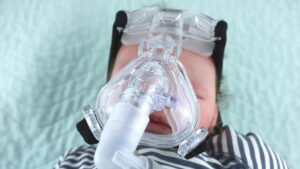
Every year, Bay Area residents brace themselves for wildfire season—and along with it, the inevitable decline in air quality. Smoke from wildfires can linger for days or even weeks, leaving the air thick with pollutants that irritate the lungs and make breathing difficult. For people with asthma, COPD, or other chronic respiratory conditions, these weeks can be especially dangerous.
One of the most effective ways to stay healthy during this time is to work with a trusted healthcare provider who can help you plan ahead, monitor your condition, and respond quickly if your symptoms worsen. Many patients are now turning to wildfire season respiratory care as part of their ongoing health strategy. This proactive approach focuses on prevention, early intervention, and access to care—crucial steps when air quality suddenly takes a turn for the worse.
Why Wildfire Smoke Is a Serious Health Risk
Wildfire smoke is made up of fine particulate matter (PM2.5), gases, and other toxic substances that can penetrate deep into the lungs. Even healthy individuals may experience coughing, eye irritation, or fatigue when air quality levels drop. But for people with asthma or COPD, the risks are much higher.
Breathing in smoky air can trigger asthma attacks, worsen COPD flare-ups, and lead to complications like pneumonia. Children, older adults, and those with preexisting health conditions are at the greatest risk. That’s why wildfire season respiratory care has become an essential part of managing chronic respiratory conditions in California.
The Role of a Personalized Care Plan
Managing asthma or COPD during wildfire season requires more than just an inhaler. A personalized care plan developed in partnership with your doctor can help you stay ahead of potential flare-ups.
With wildfire season respiratory care, your plan may include:
- Reviewing and updating your medications before wildfire season begins.
- Having a clear action plan for what to do if symptoms worsen.
- Access to same-day or next-day appointments when urgent care is needed.
- Guidance on when to use rescue inhalers or start corticosteroids.
- Preventive strategies like using HEPA air filters at home or wearing masks outdoors.
This kind of proactive planning is often easier to achieve through concierge medicine, where patients benefit from direct access to their physicians and more time during visits.
Staying Informed About Air Quality
Knowing when to limit outdoor activity is critical for those with respiratory conditions. The Bay Area Air Quality Management District provides daily updates and alerts on air quality levels. Your doctor can also help you understand what those numbers mean for your specific condition and when it’s safest to stay indoors.
Patients receiving wildfire season respiratory care often receive education on how to monitor air quality at home, recognize early warning signs of exacerbation, and adjust activity levels accordingly.
How Concierge Medicine Supports Respiratory Health
Concierge medical care is designed to give patients faster, more personal healthcare experiences. Instead of navigating crowded waiting rooms or delayed appointments, you have direct communication with your doctor when you need it most.
For patients with asthma or COPD, this means:
- 24/7 access to advice when symptoms flare.
- Easy prescription refills or adjustments during poor air quality days.
- Same-day visits for breathing treatments or urgent evaluation.
- Coordination with specialists like pulmonologists if needed.
Concierge medicine Palo Alto and concierge medicine San Mateo practices are particularly popular among Bay Area residents seeking this level of care. These internal medicine doctors work closely with patients to build a long-term relationship that supports both day-to-day wellness and crisis situations.
Preventive Strategies Beyond Medication
Medication is only one part of managing asthma and COPD during wildfire season. Your doctor may also recommend additional steps to protect your lungs, including:
- Using portable air purifiers in bedrooms and living areas.
- Creating a “clean room” in your home with minimal outside air infiltration.
- Avoiding strenuous outdoor exercise when air quality is poor.
- Staying hydrated to help your body clear inhaled irritants.
Private doctors and general internal medicine physicians in concierge practices often take the time to walk patients through these steps and tailor them to each home and lifestyle.
Why Planning Ahead Matters
Wildfire smoke can move quickly and without warning, and waiting until symptoms appear can make treatment more difficult. By prioritizing wildfire season respiratory care early, you ensure that your medications, action plans, and communication channels are ready before the first red flag warning is issued.
Patients who work with internal medicine practices that offer healthcare concierge services often report feeling more prepared and less anxious during wildfire season because they know help is just a phone call away.
Final Thoughts
Poor air quality is an unfortunate reality for Bay Area residents, but it doesn’t have to derail your health. By understanding the risks of wildfire smoke, staying informed about air quality, and working with a doctor who offers personalized, proactive care, you can minimize flare-ups and breathe easier—even during the smokiest days of the year.
Wildfire season respiratory care is about more than surviving a tough few weeks; it’s about building a health plan that keeps you safe year after year. If you’ve been looking for a way to manage asthma or COPD more effectively, now is the perfect time to explore options like concierge medicine and medical concierge services that prioritise your well-being.




